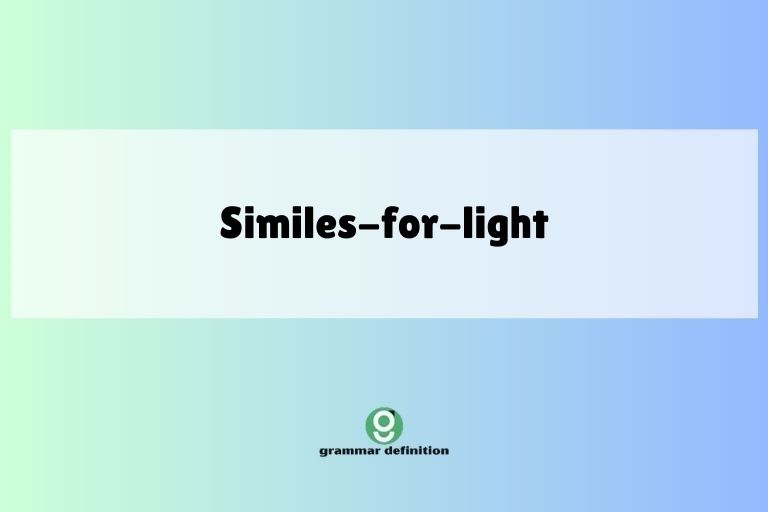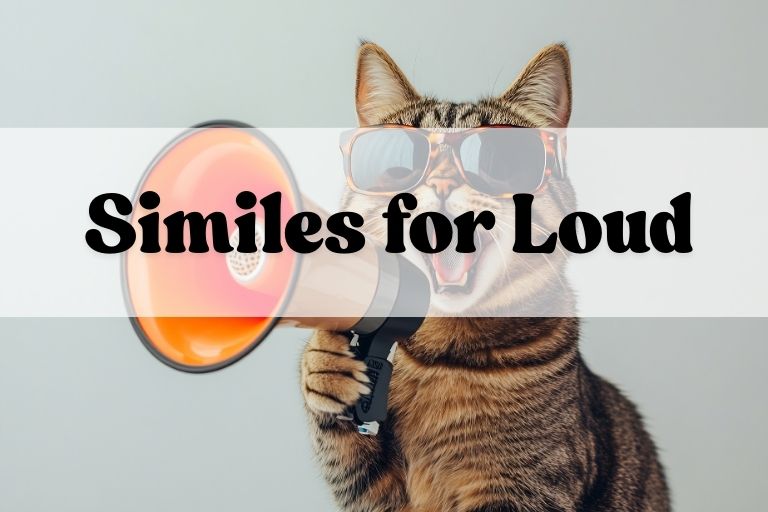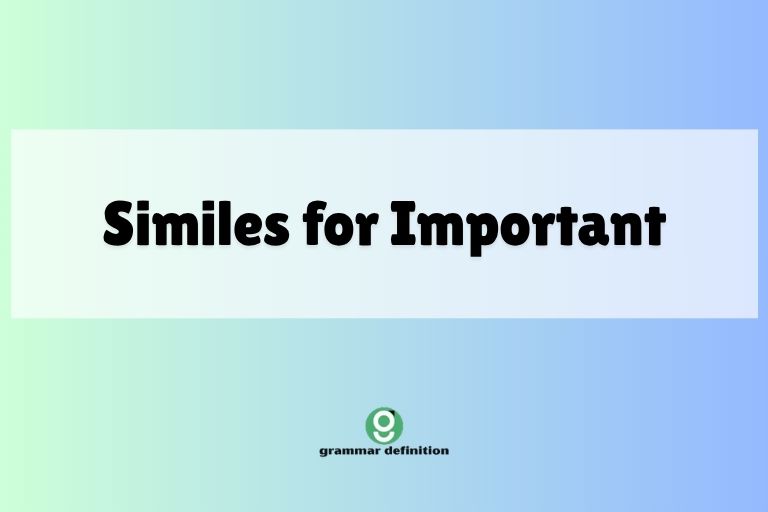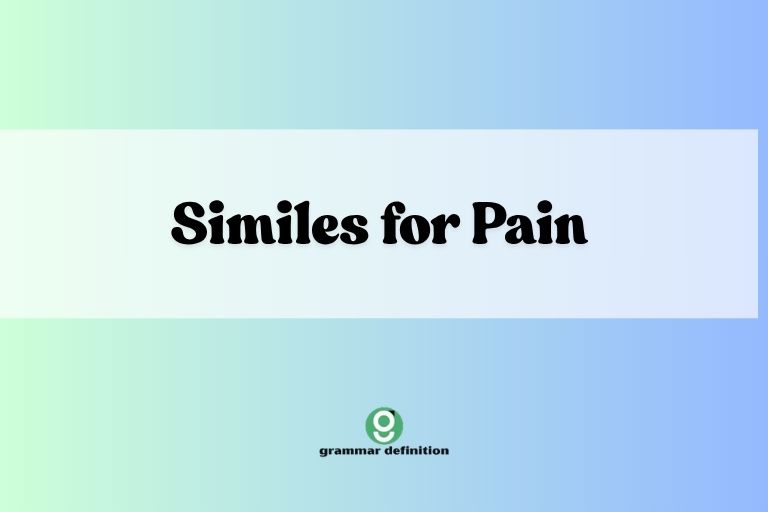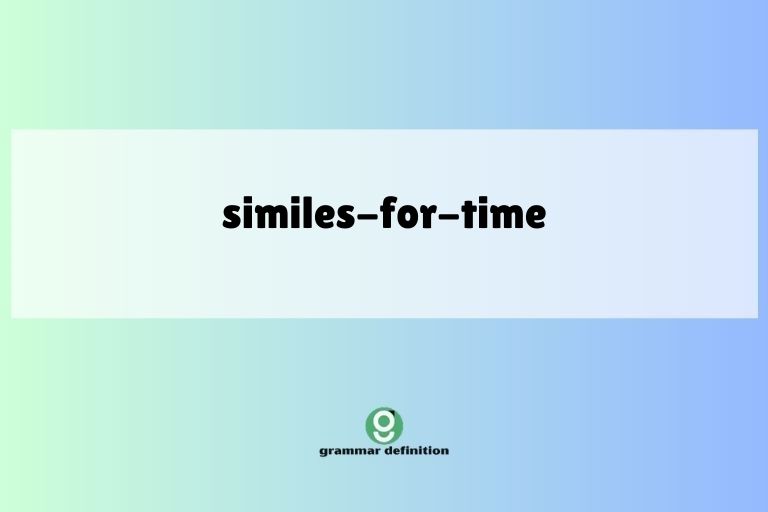Similes for Cute: A Comprehensive Guide
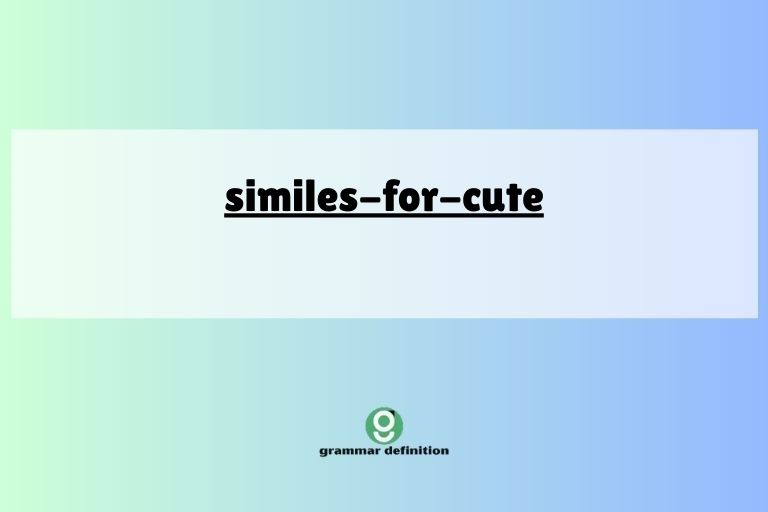
Similes are a powerful tool in the English language, allowing us to create vivid and engaging descriptions by comparing one thing to another. When it comes to describing something as “cute,” similes can add a delightful layer of nuance and imagery.
Understanding how to effectively use similes for cuteness not only enhances your writing and speaking skills but also allows you to express your appreciation for the adorable in a more creative and impactful way. This article will guide you through the definition, structure, types, and usage of similes for “cute,” providing numerous examples and practice exercises to help you master this charming aspect of English grammar.
Whether you’re a student, writer, or simply someone who enjoys the beauty of language, this guide will equip you with the knowledge and skills to craft compelling and heartwarming descriptions.
Table of Contents
- Introduction
- Definition of Similes for “Cute”
- Structural Breakdown of Similes
- Types of Similes for “Cute”
- Examples of Similes for “Cute”
- Usage Rules for Similes
- Common Mistakes with Similes
- Practice Exercises
- Advanced Topics: Nuances and Variations
- Frequently Asked Questions (FAQ)
- Conclusion
Definition of Similes for “Cute”
A simile is a figure of speech that compares two different things using the words “like” or “as.” The purpose of a simile is to create a vivid image or convey a specific feeling by drawing a parallel between the two things being compared. When used to describe something as “cute,” similes help to amplify the feeling of adorableness by associating it with something inherently charming or endearing.
The effectiveness of a simile relies on the reader or listener understanding the positive qualities associated with the comparison subject.
Similes serve a crucial function in descriptive language. They allow us to move beyond simple, direct descriptions and instead evoke a stronger emotional response.
For example, instead of simply saying “The puppy is cute,” you could say “The puppy is as cute as a button,” which adds depth and charm to the description. The context in which a simile is used also plays a significant role in its effectiveness.
A simile that works well in one situation might not be as effective in another. Consider your audience and the overall tone of your writing or speech when choosing similes.
In essence, similes for “cute” are designed to elicit feelings of warmth, tenderness, and delight. They are a creative way to express appreciation for the adorable qualities of something, whether it’s a person, an animal, or an object.
By carefully selecting the comparison subject, you can craft similes that are both memorable and impactful, leaving a lasting impression on your audience.
Structural Breakdown of Similes
Understanding the structure of a simile is essential for creating effective and meaningful comparisons. A typical simile consists of three main components: the subject being described, the linking word (“like” or “as”), and the comparison subject. The basic formula is: Subject + Linking Word + Comparison Subject.
The subject is the thing you are describing as cute. This could be anything from a baby animal to a small object.
The linking word, either “like” or “as,” establishes the comparison between the subject and the comparison subject. The comparison subject is the thing that the subject is being compared to, and it should have qualities that are generally considered cute or endearing.
Let’s break down a few examples:
- “Her smile was as bright as sunshine.” Here, “her smile” is the subject, “as” is the linking word, and “sunshine” is the comparison subject.
- “The kitten was like a fluffy cloud.” In this case, “the kitten” is the subject, “like” is the linking word, and “a fluffy cloud” is the comparison subject.
The choice between “like” and “as” often depends on the specific phrasing and the rhythm of the sentence. “As” is typically used when comparing an adjective, while “like” can be used more flexibly.
For example, “as cute as” sounds more natural than “like cute as,” while “like a button” sounds more natural than “as a button.” Pay attention to the sound and flow of the sentence when choosing between the two.
The strength of a simile lies in the aptness of the comparison. A well-chosen comparison subject can create a vivid and memorable image in the reader’s mind.
A poorly chosen comparison, on the other hand, can be confusing or even humorous in an unintended way. Therefore, it is important to carefully consider the qualities you want to emphasize and choose a comparison subject that effectively conveys those qualities.
The more familiar and universally understood the comparison subject, the more effective the simile will be.
Types of Similes for “Cute”
Similes for “cute” can be categorized based on the type of comparison subject they employ. Here are some common categories:
Animal-Based Similes
Animal-based similes are a popular choice for describing cuteness because animals, especially baby animals, are often associated with endearing qualities such as innocence, playfulness, and vulnerability. These similes can evoke strong emotional responses and create a sense of warmth and tenderness.
Examples include: “as cute as a kitten,” “like a baby bunny,” and “as adorable as a puppy.”
Baby-Related Similes
Babies are universally recognized as symbols of cuteness, so similes that reference babies or baby-like qualities are highly effective. These similes often emphasize characteristics such as smallness, softness, and innocence.
Examples include: “as cute as a newborn,” “like a baby’s smile,” and “as precious as a sleeping infant.”
Object-Based Similes
Object-based similes use everyday objects that are associated with positive qualities to describe cuteness. These similes can be particularly effective when the object is small, round, or brightly colored.
Examples include: “as cute as a button,” “like a tiny jewel,” and “as charming as a miniature teacup.”
Food-Related Similes
Food-related similes often evoke feelings of comfort and delight, making them a good choice for describing cuteness. These similes typically involve sweet, small, or colorful foods.
Examples include: “as cute as a cupcake,” “like a little bonbon,” and “as sweet as honey.”
Nature-Based Similes
Nature provides a wealth of imagery that can be used to create similes for cuteness. These similes often draw on the beauty and delicacy of natural elements such as flowers, clouds, and stars.
Examples include: “as cute as a baby bird,” “like a dewdrop,” and “as radiant as a tiny star.”
Examples of Similes for “Cute”
Here are some extensive examples of similes for “cute,” organized by category:
Animal-Based Similes
Animals, especially young ones, have a natural charm that translates well into similes. The following table showcases various animal-based similes that effectively convey cuteness, along with example sentences to illustrate their use.
| Simile | Example Sentence |
|---|---|
| As cute as a kitten | The little girl was as cute as a kitten, with her bright eyes and playful demeanor. |
| Like a baby bunny | The newborn baby was like a baby bunny, small and delicate. |
| As adorable as a puppy | The golden retriever puppy was as adorable as a puppy could be, tumbling over his own feet. |
| Like a fluffy chick | Her hair was like a fluffy chick, soft and slightly disheveled. |
| As sweet as a lamb | The child’s gentle nature made her as sweet as a lamb. |
| Like a playful otter | He was as energetic as a playful otter, constantly on the move. |
| As charming as a baby seal | The baby seal’s awkward waddle was as charming as a baby seal could be. |
| Like a tiny mouse | She scurried around like a tiny mouse, barely making a sound. |
| As precious as a little fawn | The spotted fawn was as precious as a little fawn in a forest. |
| Like a cuddly bear cub | The teddy bear was like a cuddly bear cub, perfect for hugging. |
| As delightful as a baby penguin | The baby penguin’s clumsy steps were as delightful as a baby penguin could be. |
| Like a curious squirrel | He was as inquisitive as a curious squirrel, always exploring new things. |
| As endearing as a little hedgehog | The hedgehog’s tiny quills made it as endearing as a little hedgehog. |
| Like a happy dolphin | Her laughter was like the joyful sound of a happy dolphin. |
| As sweet as a baby bird | The little bird chirped as sweetly as a baby bird, hoping for food. |
| Like a playful kitten | The child played with the ball of yarn like a playful kitten. |
| As gentle as a butterfly | Her touch was as gentle as a butterfly landing on a flower. |
| Like a baby turtle | The small device was slow, like a baby turtle making its way to the sea. |
| As innocent as a newborn calf | The child’s eyes were as innocent as a newborn calf, wide and trusting. |
| Like a cute little chipmunk | He stuffed his cheeks with food like a cute little chipmunk. |
| As lively as a hummingbird | The child was as lively as a hummingbird, buzzing from one activity to another. |
| Like a baby owl | The large, round eyes made her look like a baby owl. |
| As charming as a baby raccoon | The baby raccoon’s masked face was as charming as a baby raccoon could be. |
Baby-Related Similes
Similes that reference babies or baby-like qualities are incredibly effective at conveying cuteness. Babies are universally recognized as symbols of innocence, tenderness, and pure joy.
The following table provides examples of baby-related similes, along with example sentences to illustrate their use.
| Simile | Example Sentence |
|---|---|
| As cute as a newborn | The puppy was as cute as a newborn, all wobbly legs and big eyes. |
| Like a baby’s smile | Her smile was like a baby’s smile, pure and innocent. |
| As precious as a sleeping infant | The antique doll was as precious as a sleeping infant, carefully preserved. |
| Like a cherubic angel | The child’s face was like a cherubic angel, round and rosy. |
| As innocent as a baby’s giggle | Her laughter was as innocent as a baby’s giggle, full of pure joy. |
| Like a baby’s soft skin | The blanket was like a baby’s soft skin, smooth and comforting. |
| As delicate as a baby’s touch | The flower petals were as delicate as a baby’s touch, easily bruised. |
| Like a newborn’s coo | The sound of the wind chimes was like a newborn’s coo, soft and gentle. |
| As pure as a baby’s heart | Her intentions were as pure as a baby’s heart, without any malice. |
| Like a baby’s gurgle | The stream babbled like a baby’s gurgle, a soothing sound. |
| As tiny as a baby’s hand | The miniature sculpture was as tiny as a baby’s hand, intricately detailed. |
| Like a baby’s first step | The project was like a baby’s first step, a small but significant achievement. |
| As helpless as a newborn chick | The lost traveler felt as helpless as a newborn chick, alone and vulnerable. |
| Like a baby’s babble | The language he spoke was like a baby’s babble, incomprehensible but endearing. |
| As sweet as baby powder | The air smelled as sweet as baby powder in the nursery. |
| Like a baby’s soft blanket | The sweater felt like a baby’s soft blanket, comforting and warm. |
| As gentle as a mother’s lullaby | Her voice was as gentle as a mother’s lullaby, soothing and calming. |
| Like a baby’s innocent gaze | The deer looked at them with a gaze as innocent as a baby’s. |
| As peaceful as a sleeping baby | The room was as peaceful as a sleeping baby, quiet and serene. |
| Like a baby’s soft sigh | The breeze felt like a baby’s soft sigh against her cheek. |
| As charming as a toddler’s dance | Her spontaneous movements were as charming as a toddler’s dance. |
| Like a baby’s first word | The breakthrough felt as monumental as a baby’s first word. |
Object-Based Similes
Object-based similes utilize everyday objects that are associated with positive qualities to describe cuteness. These similes are particularly effective when the object is small, round, brightly colored, or associated with pleasant memories.
Here are several examples of object-based similes, along with example sentences to illustrate their use.
| Simile | Example Sentence |
|---|---|
| As cute as a button | Her nose was as cute as a button, small and perfectly formed. |
| Like a tiny jewel | The hummingbird was like a tiny jewel, flitting from flower to flower. |
| As charming as a miniature teacup | The dollhouse was as charming as a miniature teacup, filled with tiny details. |
| Like a polished pebble | His smile was like a polished pebble, smooth and warm. |
| As bright as a shiny bead | Her eyes were as bright as shiny beads, full of curiosity. |
| Like a little trinket | The antique locket was like a little trinket, full of memories. |
| As sweet as a sugar plum | The dancer was as sweet as a sugar plum, light and graceful. |
| Like a colorful marble | The child’s imagination was like a colorful marble, always rolling and changing. |
| As pretty as a painted doll | She looked as pretty as a painted doll in her frilly dress. |
| Like a small snow globe | The room felt like a small snow globe, peaceful and contained. |
| As delightful as a music box | Her laughter was as delightful as a music box, light and tinkling. |
| Like a tiny compass | He was like a tiny compass, always pointing in the right direction. |
| As precious as a lucky charm | The old photograph was as precious as a lucky charm, bringing good memories. |
| Like a miniature dollhouse | The cottage was like a miniature dollhouse, quaint and charming. |
| As shiny as a new penny | His enthusiasm was as shiny as a new penny, bright and infectious. |
| Like a small bouquet | Her perfume smelled like a small bouquet of wildflowers. |
| As comforting as a warm blanket | The friendship was as comforting as a warm blanket on a cold day. |
| Like a delicate paper flower | Her artwork was like a delicate paper flower, fragile and beautiful. |
| As cheerful as a wind chime | The sound of the wind chimes was as cheerful as a wind chime on a breezy day. |
| Like a vintage postcard | The scene looked like a vintage postcard, picturesque and timeless. |
| As cozy as a knitted mitten | The scarf felt as cozy as a knitted mitten on a winter day. |
| Like a tiny snowdrift | The cat curled up like a tiny snowdrift on the windowsill. |
Food-Related Similes
Food-related similes often evoke feelings of comfort, delight, and sweetness, making them an excellent choice for describing cuteness. These similes typically involve small, sweet, or colorful foods that are universally appealing.
Here are several examples of food-related similes, along with example sentences to illustrate their use.
| Simile | Example Sentence |
|---|---|
| As cute as a cupcake | The baby was as cute as a cupcake, with rosy cheeks and a sweet smile. |
| Like a little bonbon | Her dress was like a little bonbon, colorful and perfectly formed. |
| As sweet as honey | Her voice was as sweet as honey, gentle and soothing. |
| Like a tiny sugar cookie | The ornament was like a tiny sugar cookie, decorated with care. |
| As delightful as a scoop of ice cream | The puppy’s antics were as delightful as a scoop of ice cream on a hot day. |
| Like a small jelly bean | The colorful candies were like small jelly beans, each with a unique flavor. |
| As tempting as a chocolate truffle | The forbidden dessert was as tempting as a chocolate truffle, rich and decadent. |
| Like a miniature macaron | The pastries were like miniature macarons, delicate and flavorful. |
| As charming as a peppermint candy | Her personality was as charming as a peppermint candy, sweet and refreshing. |
| Like a tiny marshmallow | The clouds looked like tiny marshmallows floating in the sky. |
| As pleasant as a warm apple pie | The smell of the bakery was as pleasant as a warm apple pie, comforting and inviting. |
| Like a small piece of fudge | The memory was like a small piece of fudge, rich and satisfying. |
| As irresistible as a glazed donut | The sale was as irresistible as a glazed donut to someone with a sweet tooth. |
| Like a miniature lollipop | The colorful flowers were like miniature lollipops in the garden. |
| As comforting as a bowl of warm oatmeal | His presence was as comforting as a bowl of warm oatmeal on a cold morning. |
| Like a small piece of candy | The joke was as delightful as a small piece of candy, bringing a quick burst of joy. |
| As delicious as a fresh strawberry | Her singing was as delicious as a fresh strawberry, sweet and vibrant. |
| Like a tiny chocolate kiss | The gesture was as sweet as a tiny chocolate kiss, simple but meaningful. |
| As inviting as a plate of freshly baked cookies | The atmosphere was as inviting as a plate of freshly baked cookies, warm and welcoming. |
| Like a miniature lemon drop | Her wit was as sharp as a miniature lemon drop, tangy and refreshing. |
| As delightful as a spoonful of jam | The moment was as delightful as a spoonful of jam, sweet and memorable. |
| Like a small scoop of sherbet | Her energy was as refreshing as a small scoop of sherbet on a summer day. |
Nature-Based Similes
Nature provides a wealth of imagery that can be used to create similes for cuteness. These similes often draw on the beauty, delicacy, and innocence of natural elements such as flowers, clouds, and stars.
Here are numerous examples of nature-based similes, along with example sentences to illustrate their use.
| Simile | Example Sentence |
|---|---|
| As cute as a baby bird | The little chick was as cute as a baby bird, chirping and hopping around. |
| Like a dewdrop | Her eyes were like a dewdrop, sparkling and clear. |
| As radiant as a tiny star | Her smile was as radiant as a tiny star, lighting up the room. |
| Like a delicate flower petal | Her skin was like a delicate flower petal, soft and smooth. |
| As serene as a calm lake | The baby’s face was as serene as a calm lake, peaceful and undisturbed. |
| Like a fluffy white cloud | The kitten was like a fluffy white cloud, soft and light. |
| As precious as a rare wildflower | Her kindness was as precious as a rare wildflower, unique and beautiful. |
| Like a gentle breeze | Her voice was like a gentle breeze, soft and soothing. |
| As captivating as a rainbow | The child’s laughter was as captivating as a rainbow, filling the air with joy. |
| Like a small sunbeam | Her presence was like a small sunbeam, warming everyone around her. |
| As charming as a babbling brook | The sound of the stream was as charming as a babbling brook, peaceful and relaxing. |
| Like a tiny pebble on the beach | The seashell was like a tiny pebble on the beach, smooth and perfectly formed. |
| As magnificent as a twilight sky | The scene was as magnificent as a twilight sky, full of color and light. |
| Like a small woodland creature | She moved like a small woodland creature, quiet and graceful. |
| As enchanting as a firefly | The light in her eyes was as enchanting as a firefly on a summer night. |
| Like a gentle snowfall | Her touch was like a gentle snowfall, light and refreshing. |
| As peaceful as a forest glade | The garden was as peaceful as a forest glade, quiet and serene. |
| Like a small sapling | The young tree was like a small sapling, full of potential and promise. |
| As vibrant as a blooming flower | Her artwork was as vibrant as a blooming flower, full of color and life. |
| Like a miniature waterfall | Her laughter cascaded like a miniature waterfall, joyful and unrestrained. |
| As soothing as the ocean breeze | Her voice was as soothing as the ocean breeze, calming and refreshing. |
| Like a small patch of moss | The green carpet felt like a small patch of moss under her feet. |
Usage Rules for Similes
To effectively use similes for “cute,” it’s important to follow certain rules. First, ensure that the comparison subject is universally recognized as cute or endearing.
A simile is only effective if the reader or listener understands the positive qualities you are trying to convey. For example, comparing something to a “baby skunk” might not be as effective as comparing it to a “baby bunny,” as skunks are not always perceived as cute.
Second, the comparison should be logical and make sense within the context. A simile that is too far-fetched or nonsensical will be confusing and ineffective.
For instance, saying “The kitten was as cute as a skyscraper” doesn’t make sense because skyscrapers are not typically associated with cuteness. Instead, a simile like “The kitten was as cute as a button” is more appropriate because buttons are small, round, and often associated with charm.
Third, avoid clichés. Overused similes can lose their impact and sound unoriginal.
Try to come up with fresh and creative comparisons that will surprise and delight your audience. Instead of saying “as cute as a button,” consider a more unique simile like “as cute as a ladybug on a dandelion.”
Fourth, pay attention to the rhythm and flow of the sentence. A well-crafted simile should sound natural and flow smoothly within the sentence.
Avoid awkward phrasing or unnatural word order. Read the sentence aloud to ensure that it sounds pleasing to the ear.
Finally, consider your audience and the overall tone of your writing or speech. A simile that is appropriate in one context might not be appropriate in another.
For example, a simile that is suitable for a children’s book might not be suitable for a formal business presentation. Choose similes that are appropriate for your audience and the overall tone of your communication.
Common Mistakes with Similes
Even experienced writers sometimes make mistakes when using similes. Here are some common errors to avoid:
- Using clichés: Overused similes can sound unoriginal and boring.
- Incorrect: The puppy was as cute as a button.
- Correct: The puppy was as cute as a ladybug on a dandelion.
- Making illogical comparisons: The comparison should make sense within the context.
- Incorrect: The baby was as cute as a skyscraper.
- Correct: The baby was as cute as a newborn kitten.
- Using mixed metaphors: Avoid combining similes and metaphors in a way that creates a confusing or contradictory image.
- Incorrect: She was a shining star, as cute as a button. (Mixing metaphor and simile awkwardly)
- Correct: She was as radiant as a shining star. (Simile)
- Correct: She was a shining star. (Metaphor)
- Misusing “like” and “as”: While often interchangeable, there are nuances. “As” often precedes adjectives, while “like” is more flexible.
- Incorrect: He was as a playful puppy.
- Correct: He was like a playful puppy.
- Creating awkward phrasing: A simile should flow smoothly within the sentence.
- Incorrect: Cute as a kitten, she was.
- Correct: She was as cute as a kitten.
By being aware of these common mistakes and taking steps to avoid them, you can ensure that your similes are clear, effective, and engaging.
Practice Exercises
Test your understanding of similes for “cute” with these practice exercises. Fill in the blanks with appropriate comparison subjects to complete the similes.
| Question | Answer |
|---|---|
| 1. The baby’s smile was as bright as __________. | sunshine |
| 2. The kitten was like a __________. | fluffy cloud |
| 3. Her eyes were as cute as __________. | shiny beads |
| 4. The puppy was as adorable as __________. | a baby seal |
| 5. The child’s laughter was like __________. | a music box |
| 6. The newborn’s skin was as soft as __________. | a flower petal |
| 7. The small village was as charming as __________. | a miniature dollhouse |
| 8. The dessert was as sweet as __________. | honey |
| 9. The baby’s cooing was like __________. | a gentle stream |
| 10. The tiny bird was as precious as __________. | a rare wildflower |
Exercise 2: Rewrite the following sentences using similes to describe the cuteness.
| Question | Answer |
|---|---|
| 1. The puppy is very cute. | The puppy is as cute as a button. |
| 2. The baby has an adorable smile. | The baby’s smile is like sunshine. |
| 3. The kitten is very small and fluffy. | The kitten is like a fluffy cloud. |
| 4. Her eyes are very bright and sparkling. | Her eyes are as bright as shiny beads. |
| 5. The baby seal is very charming and adorable. | The baby seal is as adorable as a newborn. |
| 6. The child’s laughter is very delightful. | The child’s laughter is like a music box. |
| 7. The newborn’s skin is incredibly soft. | The newborn’s skin is as soft as silk. |
| 8. The village is very charming and quaint. | The village is as charming as a miniature dollhouse. |
| 9. The dessert is very sweet and delightful. | The dessert is as sweet as honey. |
| 10. The baby’s cooing is very gentle and soothing. | The baby’s cooing is like a gentle stream. |
Exercise 3: Identify whether the following sentences contain correct or incorrect similes. If incorrect, rewrite the sentence with a better simile.
| Question | Answer |
|---|---|
| 1. The baby was as cute as a skyscraper. | Incorrect. Correct: The baby was as cute as a button. |
| 2. The kitten was like a fluffy cloud. | Correct. |
| 3. Her eyes were as bright as shiny beads. | Correct. |
| 4. The puppy was as adorable as a brick wall. | Incorrect. Correct: The puppy was as adorable as a baby penguin. |
| 5. The child’s laughter was like a car alarm. | Incorrect. Correct: The child’s laughter was like a music box. |
| 6. The newborn’s skin was as soft as sandpaper. | Incorrect. Correct: The newborn’s skin was as soft as silk. |
| 7. The village was as charming as a highway. | Incorrect. Correct: The village was as charming as a miniature dollhouse. |
| 8. The dessert was as sweet as vinegar. | Incorrect. Correct: The dessert was as sweet as honey. |
| 9. The baby’s cooing was like a rock concert. | Incorrect. Correct: The baby’s cooing was like a gentle stream. |
| 10. The tiny bird was as precious as a garbage truck. | Incorrect. Correct: The tiny bird was as precious as a rare wildflower. |
Advanced Topics: Nuances and Variations
As you become more comfortable with using similes, you can explore more advanced techniques to add depth and sophistication to your writing. One such technique is using extended similes, which involve developing a simile over several sentences or even a paragraph.
This allows you to create a more detailed and vivid comparison, engaging the reader’s imagination more fully.
For example, instead of simply saying “Her smile was as bright as sunshine,” you could write:
“Her smile was as bright as sunshine, spreading warmth and light to everyone around her. It was like the first rays of dawn, chasing away the shadows and filling the room with a sense of hope and joy.
Just as the sun nourishes the earth, her smile nourished the souls of those who were fortunate enough to witness it.”
Another advanced technique is using contrasting similes to create a sense of irony or humor. This involves comparing something cute to something unexpected or even unpleasant.
For example:
“The puppy was as cute as a button, but as mischievous as a gremlin.”
This creates a humorous effect by juxtaposing the puppy’s cuteness with its mischievous nature. However, use this technique with caution, as it can be easily misinterpreted if not done well.
You can also experiment with using similes to convey subtle nuances of cuteness. For example, instead of simply saying “as cute as a kitten,” you could try to capture a specific aspect of the kitten’s cuteness, such as its clumsiness or its curiosity.
For example:
“The kitten was as cute as a clumsy ballerina, stumbling and twirling with an endearing lack of grace.”
By paying attention to the specific qualities you want to emphasize and experimenting with different techniques, you can craft similes that are both creative and impactful.
Frequently Asked Questions (FAQ)
What is the difference between a simile and a metaphor?
A simile compares two things using “like” or “as,” while a metaphor states that one thing is another. For example, “She is as cute as a button” (simile) versus “She is a button” (metaphor).
Can I use similes in formal writing?
While similes are more common in creative writing, they can be used sparingly in formal writing to add emphasis or clarity. However, avoid overly flowery or informal similes.
How can I avoid using clichés in my similes?
Try to come up with original comparisons that are specific to the subject you are describing. Think about the unique qualities of the subject and brainstorm unexpected but relevant comparisons.
Is it okay to use multiple similes in a single paragraph?
Yes, but use them judiciously. Too many similes can make your writing sound cluttered or repetitive.
Aim for a balance between descriptive language and clear, concise prose.
How do I choose the right comparison subject for a simile?
Choose a comparison subject that is universally understood and has positive associations. Consider the qualities you want to emphasize and choose a comparison subject that effectively conveys those qualities.
What if I can’t think of a good simile?
Don’t force it. Sometimes a direct description is more effective than a poorly crafted simile.
You can also try brainstorming with others or looking for inspiration in books, poems, and other creative works.
Can a simile be too long?
Yes, a simile can be too long if it becomes convoluted or detracts from the main point. Aim for similes that are concise and to the point, unless you are intentionally using an extended simile for emphasis.
Conclusion
Similes are a delightful and effective way to enhance your descriptions of cuteness. By understanding the structure, types, and usage rules of similes, you can craft comparisons that are both memorable and impactful.
Whether you’re describing a baby animal, a charming object, or a sweet treat, similes can help you to evoke feelings of warmth, tenderness, and delight in your audience.
Remember to choose comparison subjects that are universally recognized as cute or endearing, avoid clichés, and pay attention to the rhythm and flow of your sentences. With practice and experimentation, you can master the art of using similes to express your appreciation for the adorable in a more creative and meaningful way.
So go forth and sprinkle your writing and speech with these charming figures of speech, and watch as your descriptions come to life with a touch of cuteness!

